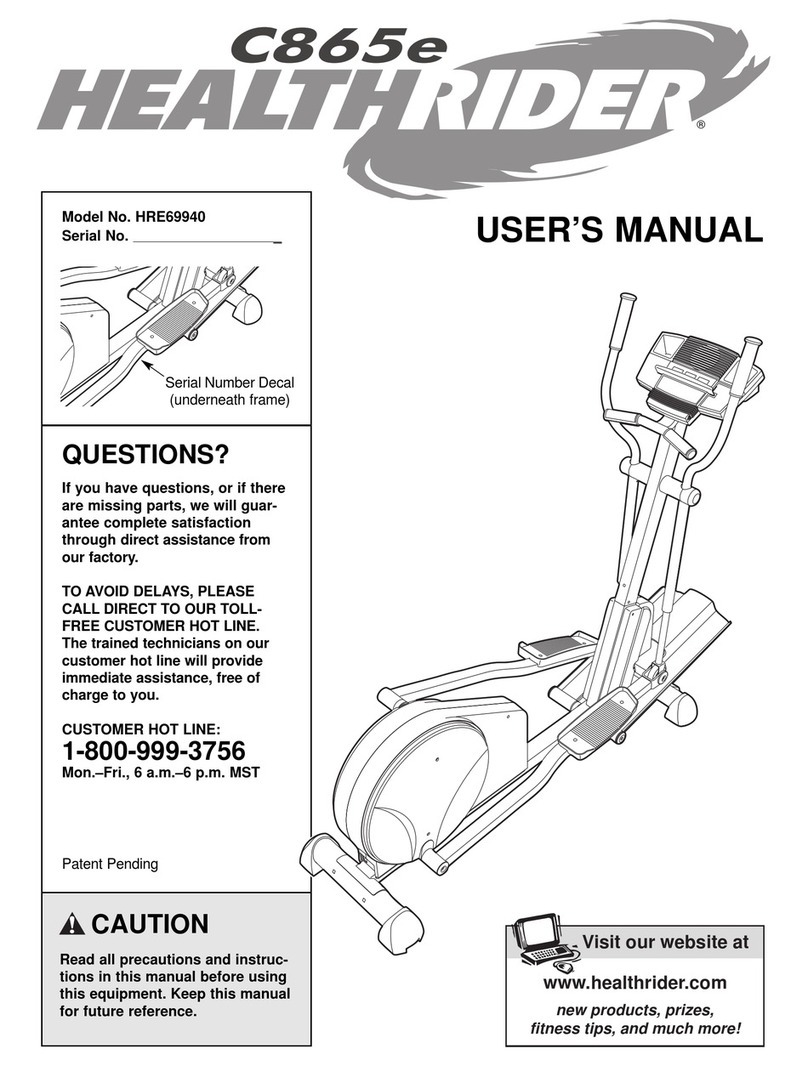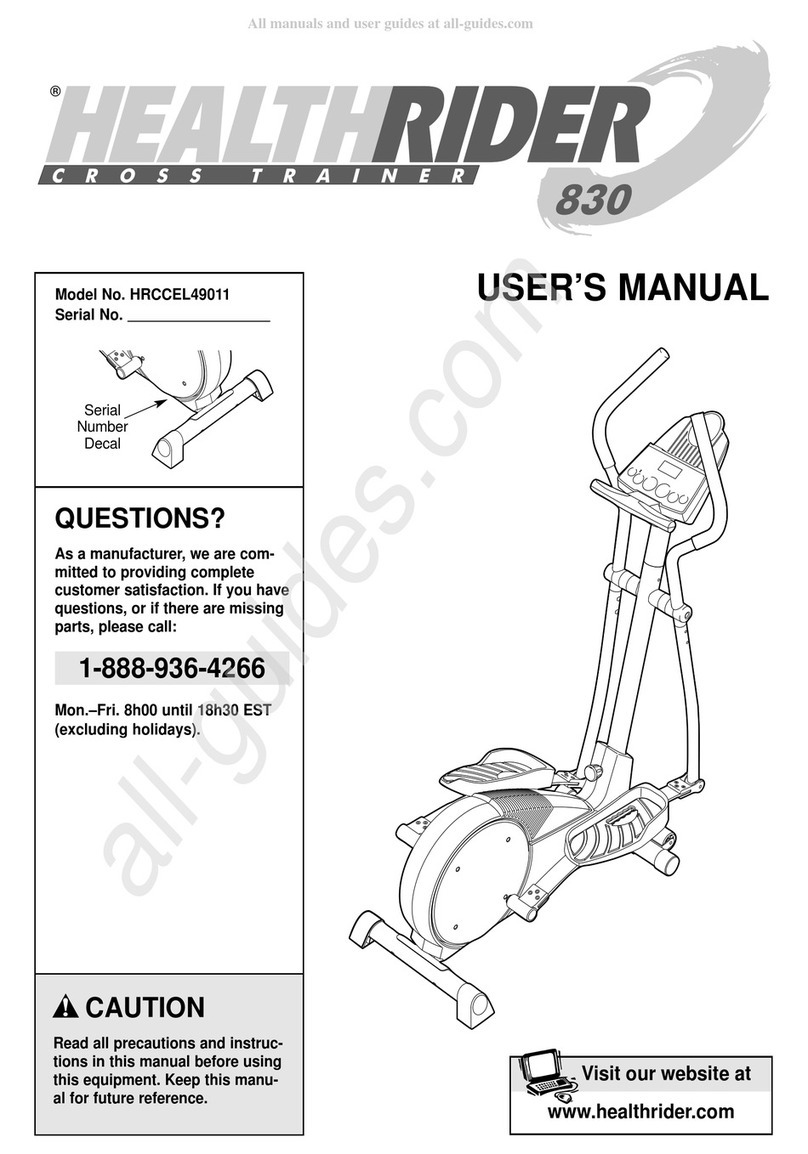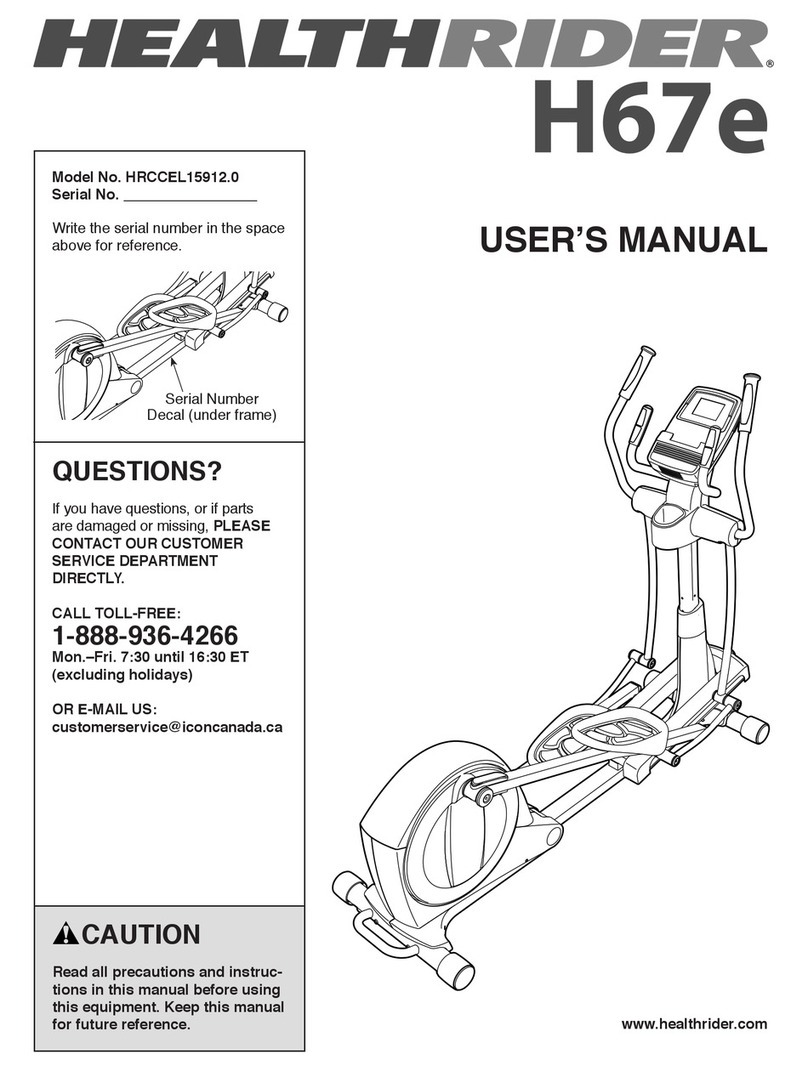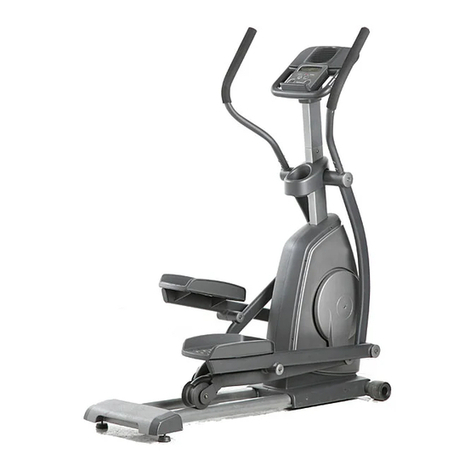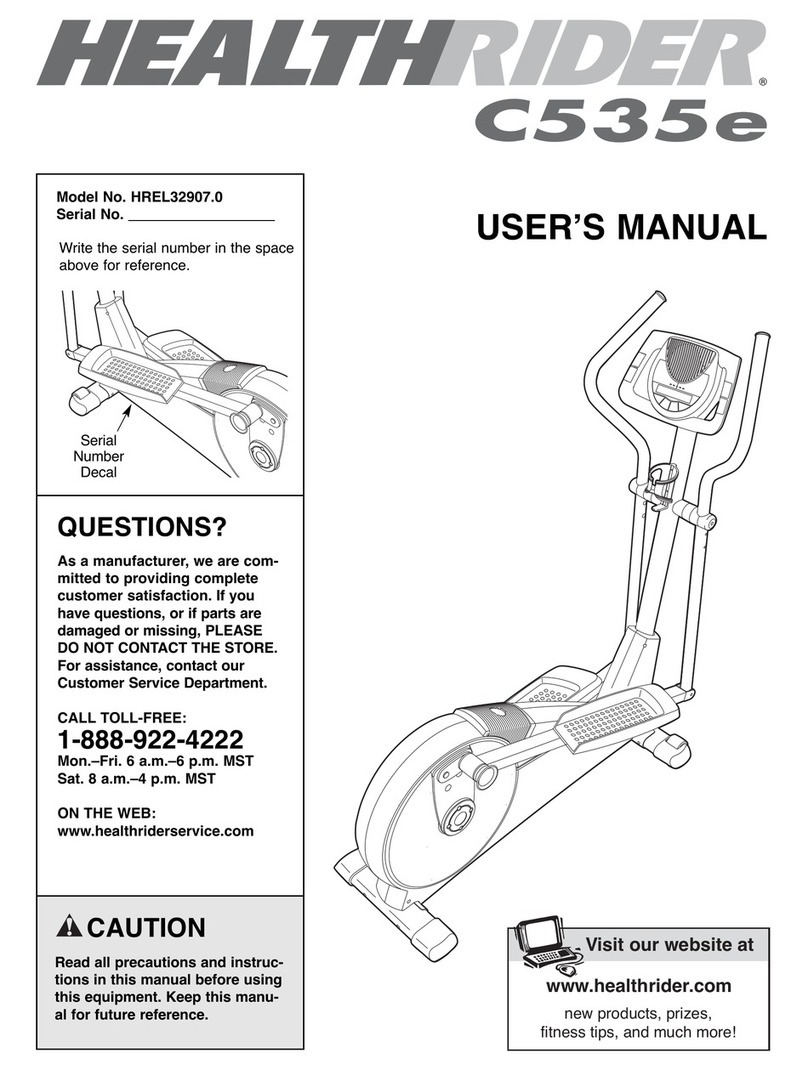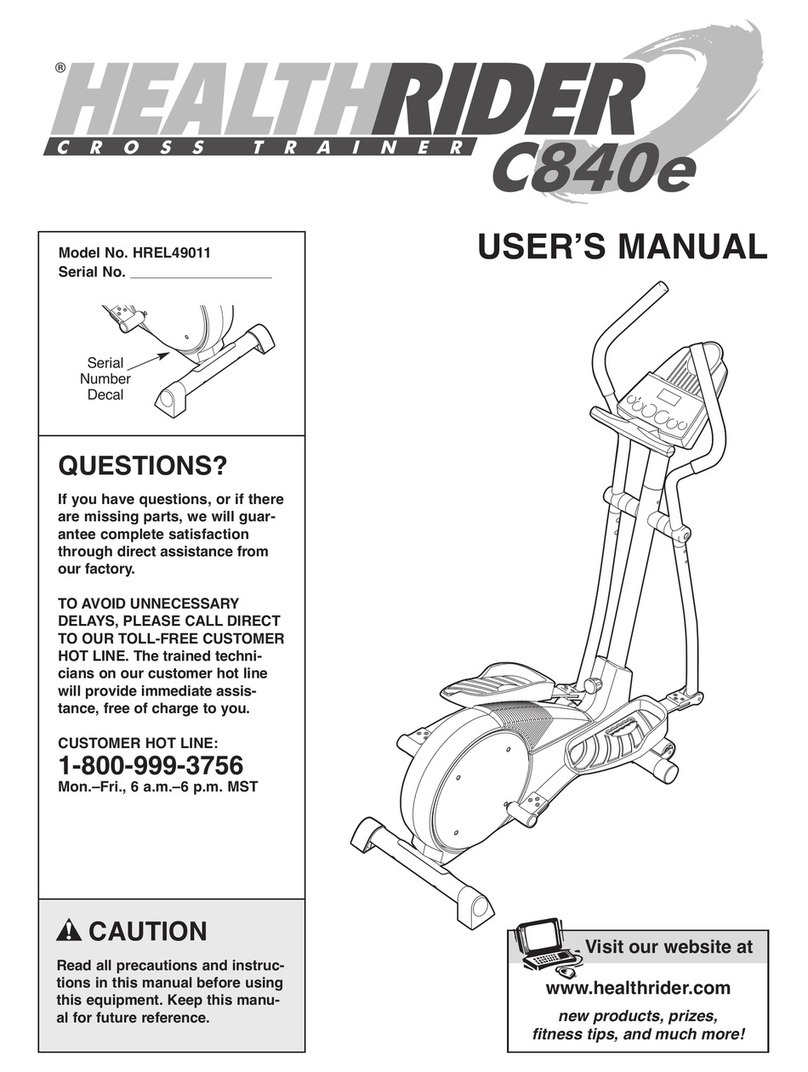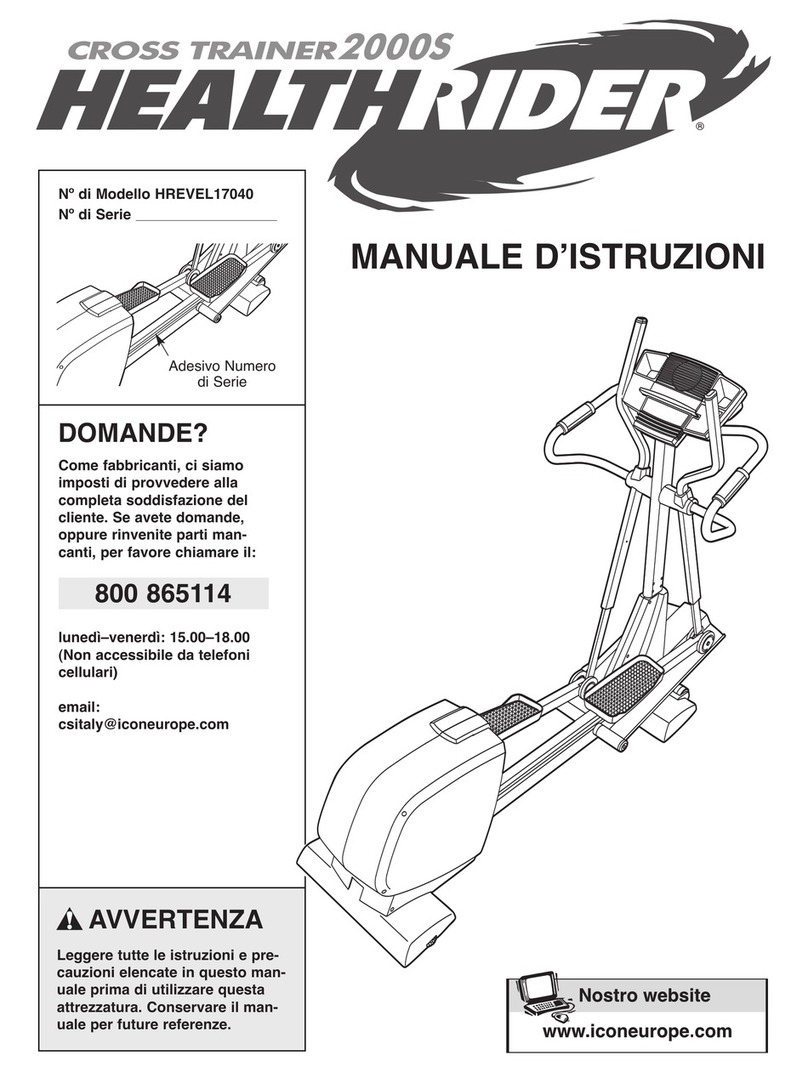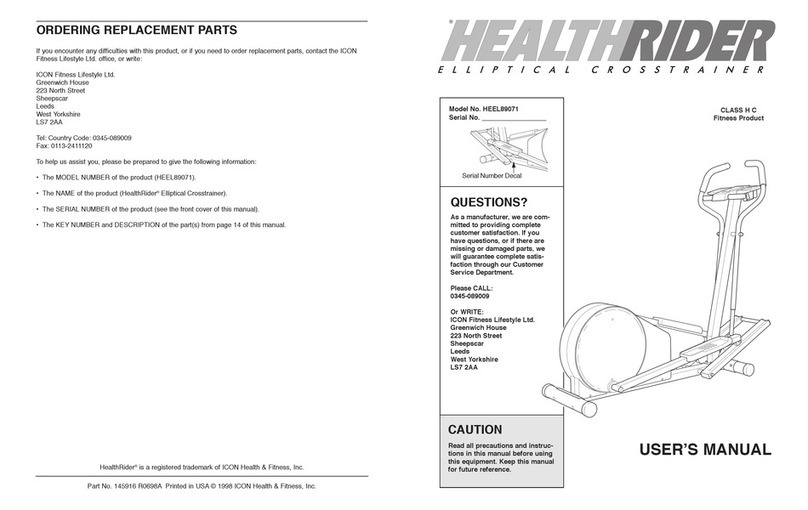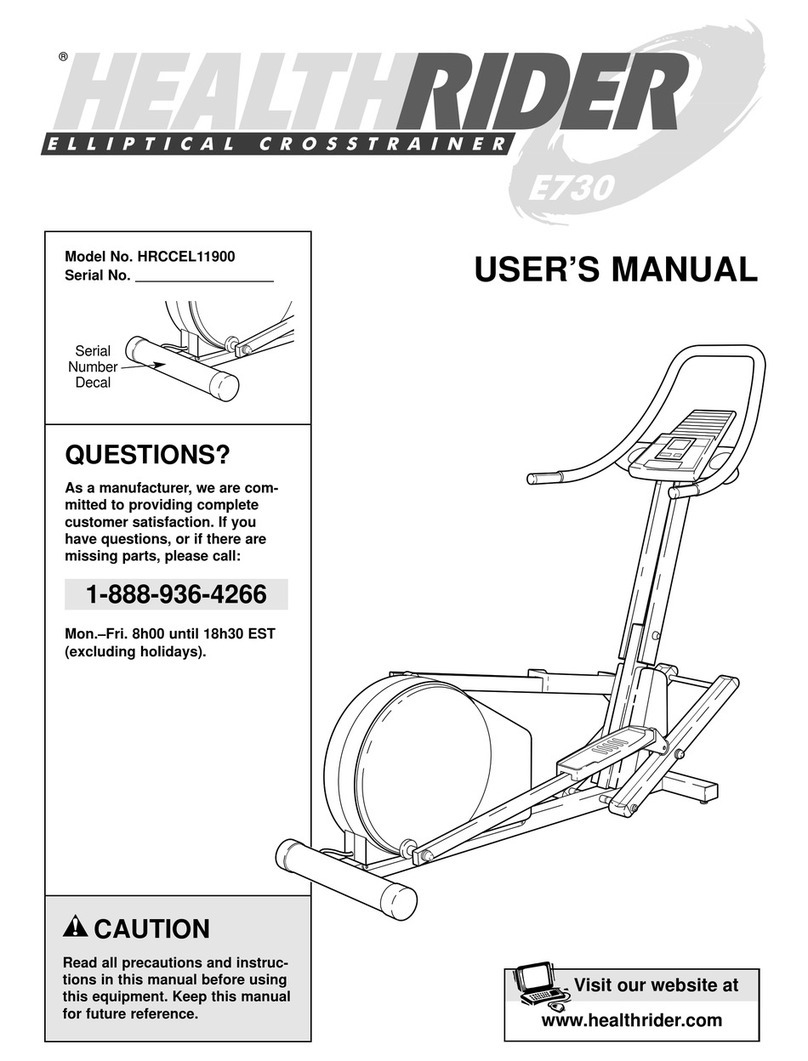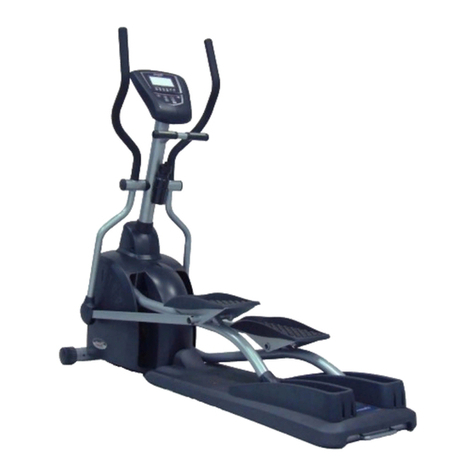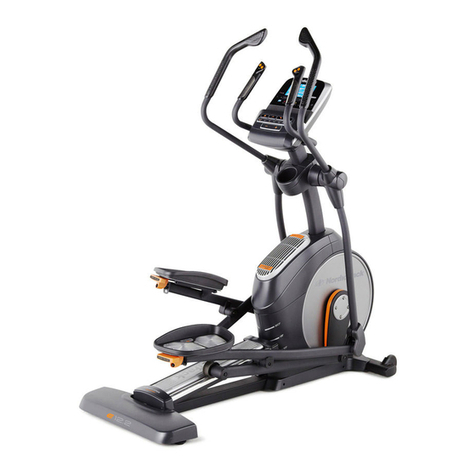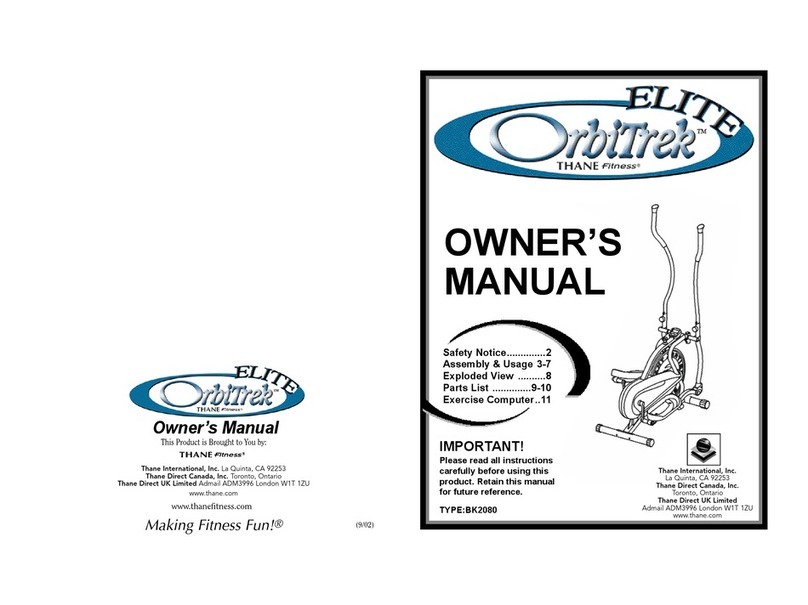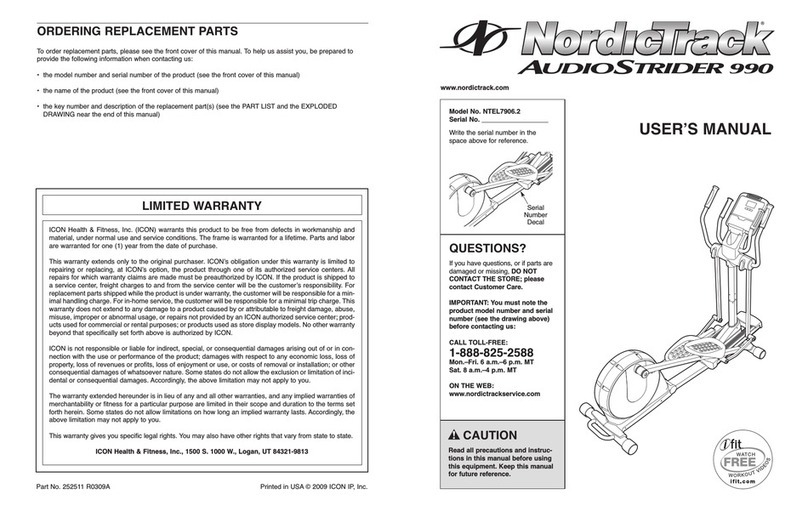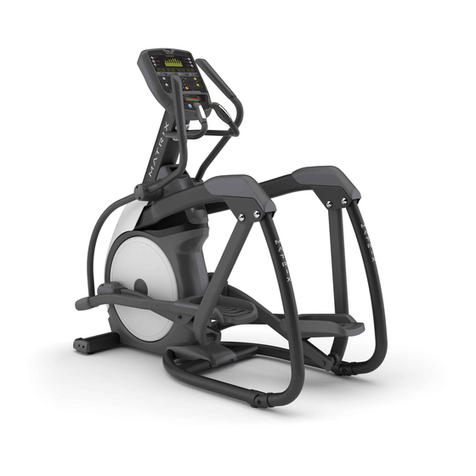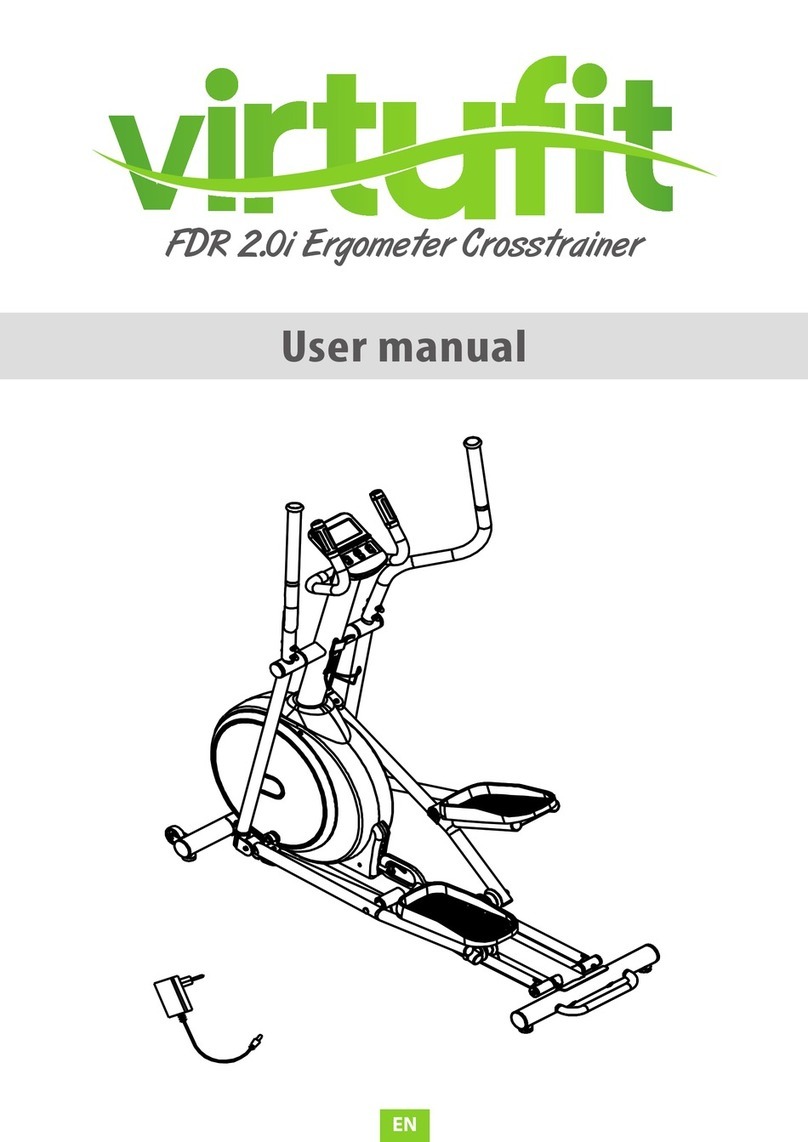
12
CONSOLE DESCR PT ON
See the drawing on page 11. Note: f there is a thin
sheet of clear plastic on the console, remove it.
A. Exercise feedback display—This display features
seven modes that give you instant exercise feed-
back: your current speed, the elapsed time (or the
time remaining in a program), the resistance level,
the approximate number of calories you have
burned, the distance that you have pedaled, your
power output in watts, and your heart rate (when
you use the handgrip pulse sensor or the chest
pulse sensor). If the scan mode is selected, the
display will change from one mode to the next
every few seconds. Or, a single mode can be
selected for continuous display.
Note: The console can show speed and distance
in either miles or kilometres. To change the unit
of measurement, see HOW TO USE THE NFOR-
MAT ON MODE on page 22.
B. Increase and decrease arrows—During programs,
these arrows will prompt you to increase or
decrease your pace to match the target pace.
C. Manual mode/program indicator—When a program
is selected, the upper right corner of the display
will show a 1, 2, 3, 4, 5, 6, 7, or 8, depending on
which program is selected. When the iFIT.com
mode is selected, the upper right corner will show
the letters IF. When the manual mode is selected,
the upper right corner will be blank.
D. Program profiles—These profiles show how the
resistance of the elliptical crosstrainer and the tar-
get pace will change during programs.
E. Warnings—See page 3.
F. Feedback mode indicators—These indicators show
which feedback mode (scan, speed, time, resis-
tance level, calories, distance, watts, or heart rate)
is currently shown. Note: When the distance is
shown, the word Miles or the letters Kms will
appear; when your speed is shown, the letters
MPH or Km/H will appear; when your heart rate is
shown, the letters BPM will appear.
. Pace indicators—When the manual mode is select-
ed, only the left pace indicator will appear. This
indicator will show your pedalling pace. As you
increase or decrease your pace, the indicator will
increase or decrease in height. When a program is
selected, both pace indicators will appear. The left
indicator will show your actual pedalling pace, and
the right indicator will show a target pace. During
the program, the target pace will periodically
change; as the right indicator changes in height,
adjust your pace so that both indicators are the
same height. mportant: The target pace is a
goal pace. Your actual pace may be slower
than the target pace, especially during the first
few months of your exercise program. Make
sure to exercise at a pace that is comfortable
for you.
H. On/Reset button—When the console is off, pressing
this button will turn on the display. When the con-
sole is on, pressing this button will reset the dis-
play. This button is also used to select the unit of
measurement for speed and distance.
I. Display Mode button—This button is used to select
the feedback modes.
J. + and – buttons—These buttons control the resis-
tance of the elliptical crosstrainer. There are ten
resistance levels; level 10 is the most challenging.
These buttons are also used to enter information
when a heart rate program or the watts program is
selected.
K. Program Select button—This button is used to
select programs and the manual mode.
L. IFIT.com button—This button is used to select the
iFIT.com mode. The indicator near the button will
light when the iFIT.com mode is selected.
To use the manual mode of the console, see page
13. To use a preset program, see page 14. To use a
heart rate program, see page 15. To use the watts
program, see page 16. To use an iF T.com CD or
video program, see page 20. To use a program
directly from our Web site, see page 21.























